








We tripled our business last year, and the only place we advertised was SLO LIFE Magazine. Since we are a small company and get to know all of our customers personally, we always get around to asking them how they heard about us and, more often than not, they say that they saw us in SLO LIFE
- Dan Melton & Rachael Hill SLO Veg



We ran an ad for the first time in the last issue of your magazine, and, so far, we have picked up 6 new clients, and the phone has been ringing with inquiries from prospective members!
- Travis Bobbitt
The Yoga Centre We have had great results so far. On the day that the magazine was mailed out, our website registered more than three times the normal traffic! Thanks again for all your help. - Mark Shaffer FunRide
I love cold weather, but my car - which runs on waste veggie oil (WVO) - doesn’t care for it at all... and, I learned that lesson the hard way.

It was December, three years ago, when I decided to convert my 1978 Mercedesnamed “VeggieMatic” by my kids - to run on the waste oil discarded by restaurants after they empty their deep fryers. The total cost of the conversion was about $900, but when I looked at the price of diesel fuel, I figured we’d have it paid off in no time at all. Plus, I relished the idea of sticking it to the Big Oil Companies. My wife loved the concept, so Christmas came early that year for us. To celebrate, we loaded up the family for a trip to the mountains. We planned to spend a few days there leading up to Christmas Eve and then we’d head home just in time for Santa’s visit. I cannot begin to tell you how invigorating it was to drive by all the gas stations on the way to the mountains. Every time we’d pass one, I’d smile to myself knowing I had a tank full of WVO powering my “frybrid.”
We made it all the way to a remote little mountain cabin outside of Yosemite. It was an incredibly beautiful scene as the snow began to fall. All was right with the
universe. Except that it wasn’t. I woke the next morning ready to take VeggieMatic to the nearest market and stock up on groceries. When I turned the key, the engine struggled and refused to start. Feeling frustrated, I called the mechanic who helped me convert the car to run on WVO. I told him what had happened and, in grave terms, he explained that my car had just suffered a heart attack - the veggie oil had thickened in the cold weather and wasn’t moving. I wouldn’t be able to start the engine until it warmed up again.
But, I couldn’t wait until spring - Santa was due at our house in less than 72 hours! And, more urgently, we needed groceries. So, I emptied my daughter’s pink Care Bears backpack of its dolls and toys, threw it over my shoulders, and started jogging the 10 miles to the market. Hours later, I came running back with food, and, considering our circumstances, even more importantly, beer. It was the first and only time in my life that I had literally gone on a “beer run.”
We were stranded, but it didn’t matter. It was great fun playing in the fresh fallen snow, warming by the fire, and baking Christmas cookies. On the 23rd (or, as we call it at my house “Christmas Eve Eve”), we decided to leave a couple of quartz heaters running overnight, one under the engine block and one under the fuel tank to, hopefully, loosen up VeggieMatic’s arteries and get its heart pumping again.
It was four o’clock in the morning on Christmas Eve when I awoke. Snow was falling. I crept out of the cabin, slipped into the car and turned the key. Rrrr-rrr. Rrr-rrr. Rrr-rrr. It struggled to start. I closed my eyes and rested my forehead on the steering wheel. Pleading with Saint Nicholas to “Please, please grant me this one small Christmas miracle…” I turned the key again... Rrr-rrr. Rrr-rr. Vrrroooommmm!! It started! And, with that, VeggieMatic roared back to life.
This has been a year full of Christmas magic with so much to be thankful for. At this time I would like to say “thank you” to you for your continued support and to our advertisers, who made it possible to send this magazine directly to your mailbox, well before Santa makes his way down your chimney.
CONTRIBUTIONS:
Submit your story ideas, events, recipes and announcements by visiting us online at slolifemagazine.com

Contributions chosen for publication may be edited for clarity and space limitations.
ADVERTISING:
If you would like to advertise, please contact Tom Franciskovich by phone at (805) 553-8820 or by email at tom@slolifemagazine.com.


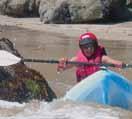


She has spent most of her life and career advocating for the preservation of open space. And, after retiring from her law practice last year, she is one year into her term as Mayor of San Luis Obispo. We dropped by one morning to get to know her a little better and find out how things are going in her new role so far…

What’s it like being the mayor of Happy Town, USA?
It’s all fun. I really enjoy it. I work over 50 hours a week, so it’s more than a full time job. And often it’s on the weekends and in the evenings, as well. But, I really like all of the community events. I spend a lot of time talking with constituents, answering emails, talking on the phone, and going to visit, for example, if a neighborhood is having a problem, I may go out there and meet with the people to see if there is any way that I can help. Sometimes, someone wishes to honor a person and they will give me a call. Things like, “Grandpa’s turning 101, would you come to his birthday party?” So, most of the time, I say, “Sure!” I like all of that stuff.
How did you end up here?
I was born in Long Beach, California. My father was stationed there during World War II. I went off to Stanford and got married while I was still an undergraduate – I’m still married to the same guy. He got a job teaching at Columbia University in New York. So, we went there, and I enrolled as a student. Then we moved to British Columbia to “the end of the road.” It’s literally where Highway 101 ends, a little fishing village called Lund. We homesteaded on 30 acres. We had all kinds of animals. We had our children there and founded a branch of a Canadian community college there. We lived in Lund for about 10 years, and we go back every summer. We still have a home there. It’s like a home away from home.
What was it like living in rural British Columbia?
It’s the hardest way of life that I’ve ever experienced, but I was in my twenties. If I get into a pinch now, I remember that I’m not taking care of 13 goats, a horse, a half a dozen pigs, all these chickens, sheep, a cow, two kids and working full time and gardening. I was teaching children’s theatre in the elementary schools and trying to get the community college established. I was a theatre minor in college, and that is how I put myself through college, by doing children’s theatre. I really enjoyed that work.
Somehow, moving to “the end of the road” sounds so poetic. What motivated the decision?

We were kind of in retreat from the harsh political and urban reality of what was happening in the United States, and in New York City, when we moved to Lund, which was in 1970. We
were getting ready to have kids. I was really looking to build community; that’s very much what I like to do wherever I live. So, that’s where I first got interested in land use planning because we were involved in making a master plan for the peninsula. Lund is at the end of the peninsula, it’s almost like an island. Our time there was really about providing education, building community, raising a family, and learning how to live off the land as much as possible. It was very much the kind of life my grandparents lived in rural Missouri. We were making most of what we used, raising most of our own food. We were really trying to raise all of our own food, but there are certain limits to that. You couldn’t grow wheat up there, or rice. It was a very short growing season. Here, it’s a great climate, and you can garden year round. Right now is a great time to plant broccoli, lettuce, and spinach.
What do you like to do for funstill raising farm animals?
No, but I have a little Yorkie. She’s angry at me right now because I didn’t take her for a walk this morning, I came and saw you instead [laughter]. I like to hike, I enjoy reading, I’m part of a book group, I work out at the gym, and I’ve got four grandchildren. We have a son and a daughter and they each have two little boys. Two of my grandchildren live in San Luis and two of them live in Sun Valley, Idaho. This Christmas they’re coming out to visit us. We have our son’s surfboard and wetsuit in our garage, so that’s a guarantee that we get to see him – he likes the ocean. My husband and I are both really involved with the children and we like to travel. I like to cook, and I like to garden. I enjoy going to the theatre. I love music.
Speaking of books, have you read anything good lately?
River of Doubt, is an interesting book. Theodore Roosevelt is one of my heroes. I love all of the things he did for the environment, and he was also fiscally conservative. I’m conservative when it comes to spending money, and I want to make sure we get a good result for every penny we spend on the city. I also want to preserve the environment, and I’m interested in principles of social justice for people. River of Doubt is about what he did after he was president. It focuses on his expedition in Latin America. It’s a fascinating story.


Dear SLO LIFE, I wanted to tell you about this interesting SLO couple. Susan and Joel Westwood are doing some really great things for our community. Susan started a program called PEAK (Providing Extracurricular Activities for Kids) at Pacheco Elementary School. This is a program designed to allow children to participate in activities outside of school (soccer, boy scouts, art, etc...) by assisting with costs, transportation, and equipment. These families would not be able to afford it otherwise. You can learn more by visiting the website at www.peakslo.org. Joel is a Cal Poly professor that helps students by fixing up bikes and lending them to students while they are living here. This seems like a great idea for students with little resources for a car and that live close enough to bike in to class.
One of the things I love about living the SLO life is meeting so many people that have such amazing ideas about giving back to the community and working together to build each other up. I am constantly amazed by the generous hearts around us.
Thanks, Meka Rudd
San Luis Obispo
We are constantly amazed too, Meka. And your note piqued our curiosity, so we asked Demitria Castanon to go out to Pacheco to have a look around. Many interviews and several drafts and a couple of edits later, we decided to run the story in this issue [see “The Tenth Sister” on page 39]. We really appreciate your thinking of us, and we would like to take this opportunity to thank others of you who have submitted story leads to us through our website (if you haven’t done so already, simply go to slolifemagazine.com and click the “Tell Us Your Story” button on the home page). Although we receive many more story ideas than we are able to print, please know that if you do not see yours published, it does not mean that we will not do so in the future… so keep ‘em coming!

Dear SLO LIFE, Love the magazine. It is slick and looks great. You give ink to the people and places in SLO. My question, as “an officious intermeddler” is how do you and the magazine get your own ink and get picked up and get libraries and others to carry you. I think you have it on the Central Coast. Cal Poly, their scientists and programs may be a good way to get the magazine international exposure.
Paul Lichtman San Luis ObispoWe like how you think, Paul. Maybe you can help us go international someday! For now, we are content to continue expanding circulation right here on the Central Coast. But, please do keep us posted on whatever great ideas come to mind and know that we do not consider you to be “intermeddling” at all! In fact, your note spurred the idea to offer a special holiday deal. Be sure to check out page 38 where we are running a subscription promotion… maybe we can convince those super smart Cal Poly professors to buy Christmas gift subscriptions for their friends who live outside the area (hint, hint).
Dear SLO LIFE, I think that you should do a profile on my daughter Kannyn January. She purchased Ambiance Boutique in 2001 after graduating from Cal Poly, and she has followed the economic storm of uncertainty into making her boutique fit into what consumers can afford and remain unique and stylish. Kannyn is an asset to downtown SLO. When so many national chains are moving into our unique downtown, Kannyn has stayed the course and provided a place where local artists, jewelry designers and fashion designers can sell to the public. Kannyn is definitely a SLOtown jewel!!!
Marian Willingham Cambria
Thanks for your email, Marian. Although we figure you are probably just a tad bit biased, we applaud your daughter’s commitment to making Downtown SLO the cool, hip place that it is. We hope to drop by and introduce ourselves to Kannyn and pick up a gift or two in her boutique. In the meantime, we’d like to encourage all of our readers to shop our local retailers as much as possible this holiday season. It’s great for our local economy, plus where else can you find such unique gifts and fantastic service? Shop local, it’s good for all of us.


Dear SLO LIFE, Would you mind forwarding this message to Tiffani Ayers in response to the “Local Food by Local People” article about her in last month’s magazine:
Tiffani, My grandparents went to Hong Kong in 1903 and my parents, my siblings and myself were all born there. Unfortunately for me, I was 4 when we left Hong Kong so my Cantonese consists of the foods I like and of course, “Aiya”! I was able to spend last weekend
listening to my family talk, tell jokes and generally have a great time in Cantonese while we celebrated my mother’s birthday. It was interesting though that when it came time to order food in Seattle’s Chinatown, they all placed me by the push cart aisle and turned to me for food recommendations. The article really hit a note as the “Chinese food connection” is what I have to pass on to my sons. In fact, for their birthday dinner they normally pick a Chinese restaurant or ask me to cook lap cheong and choy at home! Thank you for sharing your almond cookie recipe, you can be sure that it will be tried this weekend.
Mandy Leastman, CFF, CPA EVP/Chief Financial Officer Founders Community Bank
We just thought this note from Mandy was so cool, and, although it was written for us to pass along to Tiffani, we asked her if it would be okay to publish here. Tiffani’s feature in the last issue “Local Food by Local People” was a big hit with many readers as it was really more about about the way people connect through cooking than it was about her grandmother Fong Gong’s almond cookies – although they were phenomenal! Thank you, Tiffani, for sharing the story, and the recipe and thank you, Mandy, for your note. If either of you ever need any taste-testers in the future, we are located at 4251 S. Higuera Street, Suite 800.
Dear SLO LIFE, We thought it might be interesting to do an article on all the people who play a role in putting your magazine together. I know there must be quite a few involved. My wife and I eagerly await each issue of SLO LIFE and read it cover to cover each time, but we can’t help but wonder who is behind the scenes.
John G. Anderson
Arroyo
GrandeYou know, John, we get this question quite a lot. So, we figured it was time to introduce you to our amazingly talented contributors. Please turn the page and get to know the people that make it happen.
We knew that we needed to do some marketing, so we looked around at our options. We always love reading SLO LIFE, and we know lots of other people that are really into the magazine, so we thought why not try advertising in it. We gave them a call and the publisher came out and spent some time with us one afternoon. He asked a lot of questions and really took an interest in our business and what we were doing to try to grow it. He put together an advertising program for us that ended up costing a lot less than we had expected. All I can say now is… Wow, we have had an amazing response so far! We are so happy that we hooked up with SLO LIFE.
Karen Cipolla Dream DinnersYou guys are running some killer ads on T.V. right now… what’s the deal with those guys, The Bucket Busters?? Those kids rock!! I have a couple of questions. Can you give me a call? My number is…”
Hopefully you received our return call, Randy, we did leave a voicemail message. But, in case you didn’t get it, we would like to direct you to page 36 where you can learn all you want and more about the Bucket Busters. And, you are definitely right, those kids do rock!!


has a contagious passion for adventure. As the owner-operator of SLO Coast Kayaks, he spends most of his time on or near the water introducing locals to his love of kayaking and stand-up paddling. Fortunately for us he still makes time for photography. Although he has traveled the world filming documentaries, it’s his outdoors action-adventure shots that he has captured locally that we love the most.
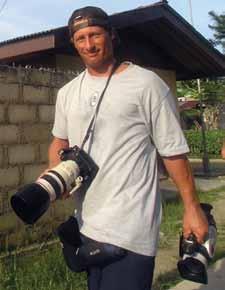
is a news anchor and reporter at KSBY. Her deep roots in the community give her the local insight we all know and cherish. It is an absolute delight to collaborate with her on the “No Place Like Home” column where she continually reminds us why we love living on the Central Coast. But, it’s her passion for getting the story right by digging into them on her own and rightfully retaining the word “reporter” in her title that we admire most.
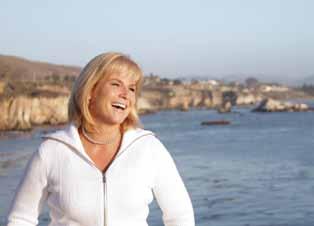

has fully immersed herself into many different aspects of the production of this magazine. She’s an amazingly fast learner, who we have not hesitated to send out on important assignments including “A Day in the Life of SLO Veg” (Aug/Sep 2011) and “The Tenth Sister” (see page 39 in this issue). Although we hope she sticks around to continue helping us as our intern, we will not be surprised to see her name in the bylines with the likes of Sunset or Runner’s World before too long.

fell in love with photography on her 9th birthday when she received her first camera as a gift. Today, she is responsible for most of the photography in the magazine, including the cover shot for this issue which was captured with a new lens she describes as having a “deliciously shallow depth of field.” She wants to become a fashion photographer, and we fully expect to find her work in the finest Madison Avenue agencies someday.
describes herself as a “sensation-seeker to the core,” so it is no surprise that she continually comes up with great story concepts that are based on her first-hand adventures around the Central Coast. She is an experienced journalist with a keen understanding of the business of storytelling. A globe-trotting world traveler, we are incredibly fortunate to benefit from the perspectives she has gained in the culmination of her many journeys both abroad and at home.

knows his stuff. As a graduate of the prestigious Brooks Institute, we are lucky to have the opportunity to work with him. By day, he is fully immersed in his work as Creative Producer at KSBY, which includes shooting and editing commercials for advertisers, including us. On the weekends, he can be found filming downhill skateboarding competitions, among other things. He is an incredible talent who has an uncanny sense for capturing beautiful images. Some of his recent commercials, including “Livin’ the SLO Life” and “Bucket Bustin’ the SLO Life” can be found on our homepage (go to slolifemagazine.com and click on the “See Our Commercials” icon).
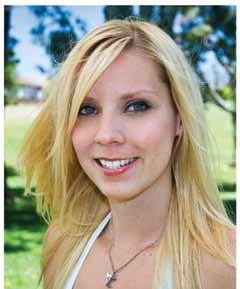
happened to be walking by with her camera equipment in hand at Farmers’ Market the day we were filming our new commercial with the Bucket Busters. She graciously volunteered to photograph the scene, which resulted in some amazing nighttime photography (see “Bucket Busters” on page 36). Through her work at SLO Stoked Productions, she spends much of her time perfecting her craft and continues to be amazed at how “a quick moment, combined with the right timing and vision” can be captured forever.
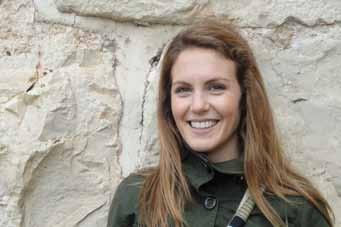

Culminating from a joint effort between Cal Poly, the City, and the non-profit foundation bearing its name, the Performing Arts Center opened to much fanfare in September of 1996. Today, it continues to inspire audience members and performers alike with a style and architecture all its own. “The PAC,” as it is known to locals, is a coveted jewel of the Central Coast. Last March, Steve Corey, as a member of the San Luis Obispo Camera Club (SLOCC), was invited to tour all of the “nooks and crannies that normally would be off bounds to visitors.” While the behind the scenes shots produced some interesting photography, it was this sweeping view from the stage of Sidney Harmon Hall, the main 1,289 seat auditorium, that left him awestruck, just as it did the first time he saw it fifteen years ago.
Do you have an amazing photo to share? Email it to places@slolifemagazine.com
 SLO LIFE
SLO LIFE
In this installment of our “Meet Your Neighbor” series, SLO LIFE Magazine conversation with Bridget Ready. She comes from a long line of local ranching families, teaches at Bishop’s Peak Elementary, and, along with her husband, Paul, an attorney, she co-founded Jack’s Helping Hand, which was inspired by their experience caring for their son, Jack, whom they lost to a rare form of brain cancer seven years ago when he was just three-and-a-half years old. Here is her story…

Let’s start from the beginning, bridget, where are you from?
My family has been around here for eight generations. I was raised out on a cattle ranch in the middle of nowhere. My husband’s family has been around for quite a while, too. He told me that I had to marry him because he was the only one I wasn’t related to in San Luis County. I went off to school at Saint Mary’s College in Moraga. I always knew I wanted to be a teacher from day one.
Did anything influence you in making that decision?
One of the best things my parents said was to “do what you love and the rest will take care of itself.” And teaching has continued to save my life. I love it. I have a Montessori credential; I studied for a year in Italy with Mario Montessori [son of Maria Montessori]. And then I went to Cal Poly where I received my teaching credential and Masters in Special Education, which is another love of mine. I first started teaching in 1982, back in the Dark Ages [laughter].
I have Philip, who is 23 at Davis; Dana, who is 21 in Colorado; Grace, who is 16 and a junior at Mission Prep; and, Jack, who would be going on 11.
Can you tell us about Jack?
He was perfectly fine when he was born with a high Apgar score [a test administered to newborns immediately after birth to determine their relative level of health]. He did very well. He passed the Well-Baby exam, also. When he was three months old, he started crying and crying, and we couldn’t figure out what was wrong, so finally we took him to the hospital where he had a seizure, and they found a brain tumor. This was right after 9/11 happened, and the planes were grounded, but we had to get him up to Lucile Packard Children’s Hospital, which is on the Stanford campus in Palo Alto, because they had to operate immediately. They ended up sending a helicopter to pick us up.
It’s a magical place, as most children’s hospitals are. I’ll never forget the first day when we were there at Stanford. I was sitting in the waiting room, and there was this old, African-American gentleman vacuuming the floor. And, as I was sitting there, I could see him sort of checking
out this couple in the corner. It was obvious that they were quite poor. When he finished vacuuming, he walked over, pulled a ten-dollar bill out of his pocket, handed it to them and limped away. Also, the parking lot attendant would give candy to everyone, and there was a woman who came into our room each morning to mop the floor, and she’d always come in early to play peek-a-boo with Jack. I think your eyes are more open at that time, and you’re more appreciative of those small gestures.
Was that what inspired you to create Jack’s Helping Hand? This is where it all starts. We had great insurance, but they would not let him leave San Luis County because they wanted him to stay and biopsy the tumor. And, Stanford was like, “No. You get him up here now. That kid’s going to barely make it through the night.” We ended up staying there for nine months in the hospital. He should have never made it, but he had multiple surgeries. And, he just fought like crazy, and he was adorable. During that time people here were so wonderful to us.
What was it like when you finally came back to SLO? When we brought him home, he was cancer-free. And we immediately got started on his rehabilitation. At Stanford, we had become accustomed to great physical therapy facilities; they had everything. But we came home, and the first thing we did was to go to the California Children’s Services (CCS) therapy room, which was about the size of a little closet. I remember looking around and thinking, “You have got to be kidding.”
We learned that CCS only got something like $600 or $800 per year for physical therapy equipment. So, we got to work on raising funds to improve it. I just thought, “I want state-of-the-art.” We worked with the county schools, and they gave us a huge, like triple-sized classroom, and we outfitted it gorgeously with every kind of piece of equipment you can imagine. It was painted with beautiful murals. But at that time, there were only 10 or 12, maybe 14, kids coming in. Now there are over a hundred. It was like “build it, and they shall come.” That is how Jack’s Helping Hand started. We just wanted to make sure that if you have a child here with special needs or one that is medically fragile, you had what you needed.








Jack’s Helping Hand has grown to include assisting children and families outside of the physical therapy facility, correct?
Yes, that’s right. As a family we incurred an extraordinary expense in driving back and forth to Stanford. Doing that two or three times a week easily added up to thousands of dollars per month. But, we realized that we weren’t alone. Lucile Packard Children’s Hospital contacted us and said, “We know you have the foundation, and we have some families that are coming up here from San Luis County. Could you possibly help them with gas cards, or lodging, or food?”

And just who were these people? What we found was that the majority of the people that are hit the hardest are local, working people, many of them with insurance. And that’s what we’re there to fill. It’s the mom and dad who are working, who have to up-and-leave and stay in a hotel because they don’t qualify for any help. And they don’t have enough to pay for it on their own. They have to pay for gas. They still have to eat, they have to sleep, and all those costs really add up quickly for families. So, we just started noticing all these families in the same situation as us.
So the foundation expanded its mission. Initially, Jack’s Helping Hand was just an effort to create a better physical therapy room for California Children’s Services, but then, out-of-theblue, came a boy named Owen Beck. He had cancer – he’s darling, oh my gosh! He’s going to be 24. He was 17 at the time, which was about a year after Jack died. Owen’s mom was a teacher, his dad was a farmer; it’s a classic story. He was diagnosed with cancer and had to have his leg amputated. And the only prosthetic leg he could get, the only one his insurance company would approve – and this was top-notch insurance –was something like a pirate’s leg. It hurt him. And he kept falling down. There was new technology out there, but it was going to cost $50,000. So, we decided to have a barbeque to raise funds. We continue this annually now, and it sells out every year. We’ve since been able to help a lot of other kids like Owen. We’ve bought wheelchairs, we’ve bought artificial limbs, hearing aids - you name it.

Aside from the obvious health challenges, do you find that these kids have anything else in common?
They are really the invisible children here because when you have a sick child, you cannot leave the house much. You’re not going out to the soccer games, or birthday parties, or the beach, and you are out of the area a lot for treatment. So, people don’t know you, and they really don’t know what you need. And, so, you get lost.
Clearly it was Jack who opened your eyes to this world. Jack was three-and-a-half when he died. I think the one thing is that as we all live, we need to live with no regrets. There are many of us whom I know now who have lost children, and we can look back and know that, although it is a very difficult thing to go through, we are very lucky to have that experience. For me, it really opened up a world that I was not aware of. I was not aware of the special needs world. And we are part of this silent population. But, it was one of the best things for my children and my family to have a child like that.
I knew that, if our family ever had a chance after all this suffering - I was gone all the time, and we almost lost everything - I needed to know that we did our best with no regrets. We did that. And, you know what, we had fun. We got to see things that other people don’t see.
Luckily we had very good counseling, in fact I had a great psychiatrist who has since passed away of a brain tumor. But, we had a great deal of support. My 23-year-old - I don’t know that it has anything to do with his brother - he’s kind of a wild man [laughter]… he’s at UC Davis, hopefully, someday graduating. But, he doesn’t seem to be in a very big rush. But, honestly, I think it opened our kids’ world. They go to Special Olympics; they get it. They do not take things for granted, and I would say that is
It’s not that, in the end, we all succeed at what we’re aiming to do. It’s just that we give it our best shot.
“ ”top BRIDGET AND PAUL READY bottom (left to right) GRACE, JACk, PHILIP AND DANA READY
a gift. I also refused from day one to look at this experience - once Jack passed away - that this would do nothing but enrich our lives. You know, that’s a choice. And we all have to make a choice about how we see the world. And, we, as a family, have chosen to see it as an eye-opening experience, where we can help and understand others.
I have a great family and friends and faith. And, having a child like Jack brings out the best in others. People stepped forward who you would have never thought would step forward. And really you just live at a whole different level. Things that I thought really mattered, didn’t. And that’s one of the real blessings. You really get to see life from a different perspective of what is important. Through suffering comes greatness.
It sounds like you had formed some tremendous bonds through the entire experience.
When Jack died, Stanford actually sent a plane down loaded with nurses and doctors to attend the funeral. The head of the hospital called me and I said to him, “You know what - in life, all we know is that we give it our best shot. And we gave it our best shot.” And that’s what it’s about. It’s not that, in the end, we all succeed at what we’re aiming to do. It’s just that we give it our best shot.


For a year after Jack died I was completely grief stricken and kind of just laid around. I really tried my best. I had great counseling once or twice a week; I did everything you were supposed to do. I exercised, I walked, I talked to really positive people, I saw friends, and I tried to clean my house. You’re just trying to find some sense of order. My husband finally said, “Ok, you’ve got to do something. What do you love?” I just said, “I love teaching elementary school, I love it.” I knew within the first two minutes of going back to work that I had made the right decision. I just knew that was it. I love teaching. It feeds my soul.
It’s always bittersweet. Jack has a stocking that my sister sent him the day he was born. It’s an angel. Now I think, “Ah-ha - that makes sense!” It’s bittersweet. Time does help. It never goes away, but it does help. I think holidays are hard. I try to talk with other families because you want to give them hope that it’s a different life after you’ve lost a child. You can’t go back to the life you had before. That life’s done. So, you have to go out and build a new one. And I think that is so critical for parents to know. The heart grieving is the hardest work you will ever do. But, in the end, as you build your new life, you owe it to your child because they want you to go on, they want you to live. And, in honor of them, it’s your responsibility to do that.
Do you feel that with Jack’s Helping Hand you are somehow keeping him alive?
You know, it’s really interesting. I did not plan on that. What I am trying to do is to educate people to the needs of this community. I think that’s more how I see it. I was just so surprised to see so much need, particularly after raising three “perfect” children – I can tell you some great parenting stories I have [laughter], especially now that I have my third going through “teenage hood” – I just feel that I was brought into a world that is just so hidden with so many needs, and I just want to help as much as I can and fill those needs. That is what I am trying to do.

I’ve got another year until I get my daughter off to college then I am going to go back to horseback riding. You know, I really loved horseback riding. I grew up riding horses, and I am really looking forward to getting back on a horse.

Thanks for taking the time to talk with us today, Bridget – we are truly inspired by your grace and wisdom. That’s very sweet of you to say. Thanks for your interest - it means a lot.

In 2007, Sky Bergman found her dream home just a block-and-a-half away from her apartment on Mill Street. She made an offer without even laying eyes on the inside of the home, which was then a rental property. “The location was perfect, but the house was a mess - it needed a complete remodel,” remembers Bergman, a Photography Professor at Cal Poly.

To counteract the prominent “foursquare-style” architecture - characterized by the fact that the roofline is nearly a perfect square - Bergman enlisted the help of architect Enrica Lovaglio Costello. It became clear during the early design phase that the home, which was originally built in either 1904 or 1907 (Bergman has found conflicting documentation), needed something to smooth out its overall “boxy-ness.”
The idea came about to soften the strong angular lines of the exterior by creating soft contours with winding walls and archways throughout the interior. This helped to preserve the original character of the structure, while at the same time introducing a more modern feel with a logical, clean interior flow. The result is a well-thought-out, light-filled interior which is warm and inviting. Exacting attention to detail is apparent throughout.
Design and layout of the surrounding yard was conceived by Bergman, and features a whimsical “sculpture garden” that is especially popular with children. “It all started when my mom gave me this metal sculpted rooster for my birthday. I put it outside, then a friend noticed it and bought me another item, then someone else brought over something for the collection. It’s grown exponentially since then,” she laughs.
For the rest of the landscape, the focus has been on water efficiency. There is no grass lawn, instead Bergman was able to recycle the brick in the fireplace which had been removed, and now it makes up the walkways that wind through the succulent gardens. Bergman, who has a fondness for the look of artichoke plants also took liberty in adding them, as well as a small plot of tomatoes. Somehow, all of the changes fit together to reflect a new unique, eclectic style to this historic Mill Street gem.
 By ELLIoTT JohnSon
By ELLIoTT JohnSon

Bergman and Costello softened the “boxy-ness” of the foursquare structure by adding contours to the walls, archways, and the island, pictured here in the kitchen, where contrasting colors combine with abundant light to create an inviting, user-friendly space.


left The curved wall adds a modern feel when combined with mosiac tilework. below The clawfoot tub in the second bathroom, which is surrounded by extra tall wainscoting, pairs nicely with the classic-style black and white hexagon tile floor.


If your home is feeling small and crowded it’s time to clear clutter. Create smaller


Don’t be overwhelmed by the thought of cleaning. Tackle the job in a room-by-room fashion or work in different zones of your home - wash windows, mop floors, deep clean carpets, polish furniture, etc. TIP! No time for a big scrubfest? Setting aside just 30 minutes a day can make a huge impact.



Prepare your home for the seasonal change in weather by sealing gaps around doors and windows. Weather-stripping is an easy, inexpensive tool for sealing openings and reducing your heating and air conditioning bill. TIP! Take it a step further by installing dual pane windows.
a fresh coat of paint is the easiest and cheapest way to dramatically change a room’s appearance. It not only adds to your home’s appeal, it can even make it look cleaner. Plus, by using paints with low-volatile organic compounds (low VOC paints), you won’t produce the toxic fumes that traditional paints do.
TIP! Paint a bold accent wall to bring drama to a room.
Pressure washing is a fast and easy way to blast grime, mold and mildew off of your home’s exterior, decks, driveways, and sidewalks. TIP! Avoid windows, light fixtures, and anything else that could break under the pressure.







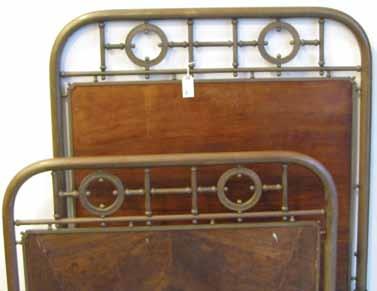












Transportation is an often overlooked area to save both money and resources. In fact, AAA Insurance estimates that just operating a vehicle costs over $700 per month! Many Americans believe that they have to own their own vehicle and cannot reduce their transportation costs. Ideally, you can reduce the number of vehicles in your household and get by with sharing a single car instead. If that is not possible, try committing to using your vehicle less by riding the bus, joining a vanpool, or biking to work. By setting all appointments and errands outside of the office on Tuesdays and Thursdays, for example, and finding an alternative the other three days of the week, you can reduce your car use by 60% during that time. And, if you are in the market to buy a new car, consider electric or natural gas. Try increasing your miles per gallon by 10 and reducing your fuel costs by 33%. This will make an enormous difference over time. With a little planning, you should be able to substantially reduce your transportation costs.
We get this question a lot, and before our customers invest in solar panels or energy efficient heating, we recommend that they first maximize the efficiencies of their current systems. Simple things like replacing old refrigerators, properly sealing a home, and checking the duct work make a big difference. There was a study conducted by the Energy Commission last year in San Diego that found that 50% of the surveyed home’s heat going through the ducts was lost in the attic! 50%... and that was a new home! It is not uncommon to find up to 40% heat loss in the duct work of an average home. Keep in mind, too, that this work doesn’t have to be expensive. And there are government programs available currently to help with the cost. Once these things are completed, you will likely discover that you actually needed a smaller solar system than you initially thought. The same is true with hearth products. Maybe you won’t need as much heating capacity as you expected because your home has become more energy efficient.






One of the world’s
And,
Recently, while he was in Santa Barbara, Sanchez-Rivera decided to blow off some steam after a particularly intense photo shoot. So he took a quick drive up the coast. By chance, he pulled off at Marsh Street, which led him into downtown San Luis Obispo. Recalls SanchezRivera, “It immediately captured me, it was just so beautiful, the weather was perfect. It had a really good energy, a good vibe and the beach is right here, which is a requirement for me.”
Sanchez-Rivera, who had grown up in Colombia, left to attend college on the East Coast and started his career on Wall Street with a large mutual fund company. During one of his many visits back home, he walked into his old bedroom where he was surprised to find a huge pile of bikinis. He asked his sister what it was all about, and she replied that she had made them and was giving them to her friends. Sanchez-Rivera was intrigued. He brought some back to New York and gave them to a friend who owned a modeling agency there. One of the suits was used in a fashion shoot. The stylists and models raved about the bikinis.

Spotting an opportunity, Sanchez-Rivera set out to get the suits into retailers around Manhattan. “I literally went door-to-door after work. I’d empty my brown Bali suitcase that
my mom had given me - it had belonged to my grandfather - and I’d take out all my paperwork and stuff it full of bikinis,” remembers Sanchez-Rivera. “But, I just got completely ripped apart by the buyers. They told me to get out of the business, that I had no idea what I was doing.”
Undaunted, the young designer continued to refine the product with seamstresses in his native Colombia. He also began working with renowned fashion designer, Cedella Marley (daughter to Bob Marley). And, through her Catch a Fire label, Sanchez-Rivera’s design made its way to Miss Jamaica’s appearance in the Miss Universe competition. But, the real break came one day when Sports Illustrated called. “I had all of their numbers programmed into my cell phone because I sent them samples… I started to give them instructions as to how to return the suits, just as I did each year, and the person on phone said, ‘Wait, wait… I’m calling to tell you that La Isla has been chosen to appear in the Swimsuit Edition,” recounts Sanchez-Rivera.
Not only did his suit make its way into the all-important Swimsuit Edition, but it appeared on the cover girl. Sanchez-Rivera and his La Isla brand exploded onto the national scene, and he became an overnight sensation in the industry. Calls poured in from other magazines, such as Surfing , and his swimsuit made a cameo on the David Letterman Show.
Despite the notoriety, Sanchez-Rivera comes from an agricultural upbringing - he remembers rising at 4am as a child to help make cheese that he wrapped in plantain leaves with his grandmother - whose culture is on the other end of the spectrum from the fast-paced world of fashion. So, perhaps it is not so hard to understand why he chose the easy-going Central Coast to set up shop after all. Today, the designer, who spends a lot of time looking for ways to give back, has ongoing charitable partnerships with the Surfrider Foundation, Children of the Americas, and the Ocean Futures Society. He stresses that, “As crazy as this sounds: money means nothing to me. Nothing.” Instead he cites the fact that he employs 70 full-time, head of household seamstresses in Colombia as his most important accomplishment to-date. “Things are tough down there, and some of these women who started working for me were homeless; they couldn’t afford school for their kids. Then, two or three years later that changed. The difference I can make by doing this is enormous.”








t he minute you walk in the door, you will realize that t he Great a merican m elodrama in o ceano is a different world. t he oldtime piano playing, the actors in costume showing you to your seats, and the saloontype feel of the place - anyone who’s ever been there will tell you it’s more proof that “ t here’s n o p lace Like Home.”
the folks at the Great american melodrama put on more than stage productions; they provide an experience. By the time the actors take the stage, you will have forgotten where you are, and wonder why you don’t do this more often.
the place has been around since 1975. It was John and Lynne Schlenker who came up with the idea of turning the old rexall drug store into a melodrama. “I was thinking more of a hobby,” says John. “He was trying to live out a dream to put a live theatre in downtown oceano!” adds Lynne.
John fell in love with melodrama as a performer in other areas of the country. “Virginia City, montana, the Virginia City players, mountain air players, Buckskin Joe, Colorado...” he lists them off. “The gold rush era of the United States is full of melodramas.”
m elodramas tell stories through comedy, heroes and villains and usually audience participation. “ t hey were based around a merican folklore, around happenings in the o ld west, in streets of n ew york, and that sort of thing,” explains John. “a nd because they were about political issues, people would stand up and yell things, and say things or try to correct things, and they got a little bit rowdy.”
a cast of six to eight performers does it all: provide the music, seat the guests, write

a lot of the shows, and work the snack bar during breaks. a nd they are entertaining through out the duration.
“A tip into the jar, a tip into the jar, what a glorious feeling, I need gas in my car,” the actors sing when someone puts a buck in the tip jar. “Somebody will bring their child and they’ll hand him a dollar or something, and the kid’s eyes just light up when they see what happens after they leave a tip. ‘Dad, can I have more money?’” Lynne laughs.
the Great american melodrama is an americana classic, a throwback to the wild Wild West. Tourists book tickets before they book their vacations on the Central Coast. Yet, as often is the case, locals can miss out on the fun. “We run into people all the time, and we ask ‘How long have you lived here?’” explains Lynn. they’ll tell us they’ve lived here all their lives and we ask, ‘Have you ever been to the Melodrama?’ They’ll say ‘No,’ but that they’ve always planned on coming there and can’t explain why they haven’t done so yet.”
even though that’s the case, the melodrama has survived and thrived in its unlikely location because rarely do people come here just once.
each performance includes a melodrama, a vaudeville revue, and of course the sing-along. there’s beer, burgers and popcorn so you can eat there and just enjoy an evening appropriate for all ages.
they are heading into the busy season, though. And the holiday show is a tradition for a lot of families around the Central Coast, so if you’ve been thinking about going, give ‘em a call and book it – it’s sure to remind you that “ there’s no place Like Home.”

Not just a new bike shop, a new way to buy a bike. Quality road bikes starting at $1100.

Each bike custom assembled to your specs. Instead of selling you a bike in stock, we help you assemble the bike that’s best for you at prices typically 40% below brand names. Because we buy direct from the manufacturers and sell direct to you, we save you lots of money while still offering the best products available. We sell only quality carbon and alloy road and cross bikes and have a full line of wheels including carbon and alloy tubular wheels. We service only what we sell allowing us to focus entirely on you.
142 Cross Street Suite 100 SLO, P805-544-2703 Across from Idlers. Monday through Friday 10-5 Saturday 10-4



outdoor adventure challenges me in ways the workplace does not. it takes me out of the known and throws me into natural environments that often seem intimidating and unpredictable. Kayaking has helped me handle fear, intimidation, doubt, and physical exhaustion.
a compelling element to living the “slo life” is that, unlike most of the rest of the country, our outdoor sports and adventures are not confined to seasons. So here we are with winter upon us, talking about kayaking. We truly live in a glorious place!
Kayaking forces me right into the swells of an ocean i love and fear all at once. it carries power that demands my respect and it hosts a diverse array of wildlife that amazes me. our Central Coast offers a wide variety of jagged islands, crystal coves, seaside caves, ports and jetties ripe for exploration.
Originally home to the Chumash, and later becoming a famous whaling and oil port, avila beach now provides a sanctuary to sea life and locals alike. From Port san luis kayakers can paddle out under the pier, alongside the bubbling lava rock cliffs, past Smith Island and continue along the jetty to the open, surging sea.

I enjoy working my way out past the tip of the jetty to head toward the historic Avila Lighthouse. Curious seals bob up and down, surveying you as you move through the water. Otters, like playful water dogs, twirl in the floating kelp beds, looking comically like whiskered old men. they slip and slide, scrubbing their face and body with their flippers with focus
and attention to detail. Sea birds of many varieties flock to the jetty in such density, watching your every move. Orange starfish and purple sea urchins stud the black jetty rocks, which stand in vibrant contrast.
Many choose to stay in this sheltered bay, exploring the ins and outs of the wildlife and glassy waters. but for those seeking an adrenaline rush, find a day where the swells are large, and the wind has kicked up. this will thrust you right into the heart of the unpredictable ocean as it swells, breaks, churns, and ripples.
Avila Bay is secluded and protected by a jetty quarried from Morro Rock. Kayakers wanting to feel the contrast of the open ocean waters to the glassy calm waters of the bay can paddle out past the edge of the jetty. Depending on the force of the wind and the depth of the swells, you will need to time your entrance so you do not meet the frothy crash of the waves as they battle the unnatural rock barrier. Once out from the protection of the jetty, you feel smaller than you imagined possible.
Beyond the jetty rests the beautiful Avila Lighthouse, nestled into the mountains behind it. The large and rolling swells effortlessly pull your kayak up 15-20 feet and then leave it to slide down their backside as they move towards the shore. Never breaking but seeming to threaten, the ocean plays games. i t sprays your face with icy water, and sends butterflies in your stomach as you roll up and down the largest sets of incoming waves.


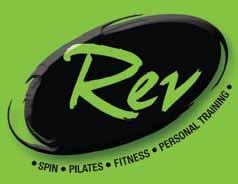


You’re just about to fall asleep, and then you think of something earth-shatteringly important that you have to do tomorrow. Instead of worrying about it all night and losing sleep, write it down and forget about it.
You’re in the middle of that deep sleep you desperately need when your neighbor’s dog starts barking outside. Suddenly you are wide awake. Ever notice how easy it is to sleep during a rainstorm? The low, consistent sound masks all of the jarring ones. Put a quiet fan in your bedroom or buy some music with ambient sounds.




If you’ve ever gotten in shape for swimsuit season or for competing in a triathlon, you know that picturing the end goal is a major motivator. Take some time every day to close your eyes and think about where you want to be. Whether it’s finishing a race or looking good in your bathing suit, putting an image in your mind will make it more tangible and more attainable.
Have you ever had the best intentions for getting on the treadmill, and suddenly find yourself too busy. Committing yourself to meeting other people on a given day and time will help keep you on track. Besides, it’s a great way to meet new people and make exercise fun.

simple -
goal is too ambitious, you’re just going to feel badly that you didn’t reach it.
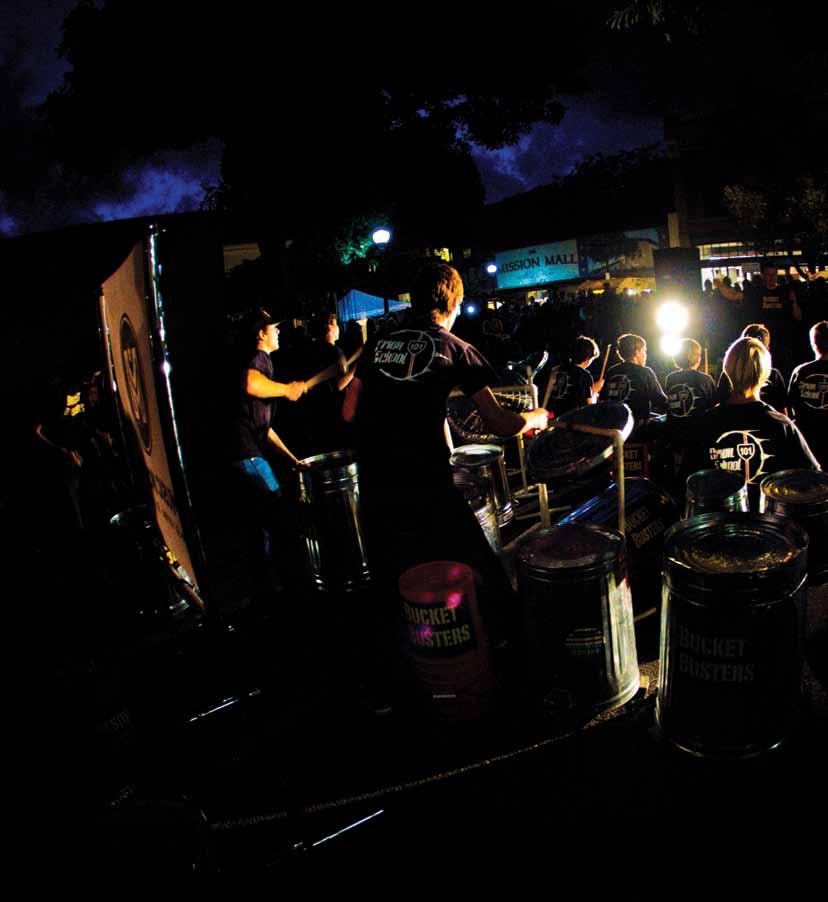
BUCKeT BUSTIn’ THe SLO LIFe go to slolifemagazine.com and click on “See Our Commercials” to see them in action
Steve Hilstein, owner of Music Motive, clearly recalls that day fifteen years ago when a young mother brought her son in to inquire about the cost of drum lessons. “I could just see from the looks on their faces that they couldn’t afford it, and it just wasn’t going to happen. And it broke my heart. I thought that was just so unfair. I had to do something about it because it was killing me.”
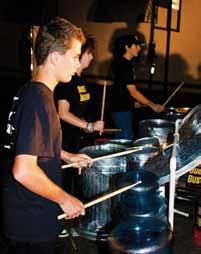

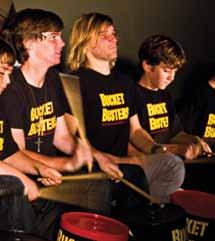
Up to this point, Hilstein, and his wife, Stephanie, had been quietly paying their instructors in cases like this, but they became maxed out as demand for these services was clearly outstripping supply. Simple economics dictated that the business take in more than it put out. And that hard reality was confronting Hilstein, who had just cashed out his life insurance policy for a mere $500 to keep things afloat. There was nothing left in the tank. The business, which had traditionally been heavy on retail sales, was now expanding its music lessons. But, many of the kids were still having trouble affording the tuition.
Salvation came, as it turns out, at church. Knowing that he operated a drum school, a local church asked Hilstein if he might be able to organize a performance along the lines of “Stomp” [an urban percussion group that used common household items as instruments] which was becoming popular at that time. Hilstein showed up at the designated time with some of his students who rolled up on stage without much of a plan. The church-goers went wild over the unique sound and some of them hung around after the performance to inquire about the band’s future plans. “We didn’t even have a name at that point,” recalls Hilstein. “But, we had these cheap buckets we kept breaking, so someone there said, ‘Hey, you’re the bucket busters, why don’t you call yourselves the Bucket Busters?’” And so it began…

The Bucket Busters have thrilled audiences throughout the Central Coast since that first gig with their unique sound, playing original music such as “Buckets of Fire,” “JLM,” and “Paradiddle Solo” on nothing but makeshift musical equipment, such as buckets, trash cans, and plastic water jugs. Best of all, the donations and performance fees the group has raised along the way have all gone toward scholarships for the kids. In other words, the money the group raises pays for the kids to have formal music lessons, which turns out is good for the kids and good for the business. A true “win-win” if there ever was one.
Hilstein, who originally moved to San Luis Obispo in 1980 from Los Angeles to a join a band as its drummer, remembers a time when music lessons kept him from veering off track. “It just means so much to these kids. They remind me a lot of myself at that age. And you can actually see how it makes a difference for them. They grow so much. It’s just so important.”

For a limited time we are offering a year-long gift subscription to SLO LIFE Magazine for just $6 …that’s 73% off the standard price!

But, wait, there’s more!
Sign up before December 15th and we will send a 7th copy (this issue) to the person receiving the gift, in an envelope marked, “Please place under the Christmas tree.” An enclosed note will explain that you have given them a gift subscription. We will mail this bonus issue and the personalized note, so they will receive it just in time for Christmas!

There are nine major peaks in San Luis Obispo County, hence the name “The Nine Sisters.” However, there is one peak that may one day stand taller than all of them put together: Pacheco Elementary School’s PEAK program, which is an acronym that stands for “Promoting Extracurricular Activities for Kids.” The program is designed to allow children to participate in activities outside of school by assisting with costs, transportation and equipment.
Louise Kraemer, a bilingual Kindergarten Aide at Pacheco Elementary School had an “aha moment” last year while watching students play soccer at lunch time. She observed some phenomenal players on the school field, but realized she had never seen some of them play in an AYSO game. One sixth grade girl in particular displayed an amazing talent and really stood out from the crowd. In a moment of clarity, Kraemer had a defining idea that may have changed the six grader’s life forever. She offered transportation for the young girl and her family to attend AYSO soccer sign-ups and also paid the fees for her to join the league. When the season ended, the young standout could be found proudly wearing her well-deserved AYSO All-Stars jacket to school nearly every day of the week.
Kraemer then met with two of her good friends, Melanie Mills and Susan Westwood, who are parents of students at Pacheco and active community volunteers, to share this rewarding experience. Inspired, by Kraemer’s success, the trio conceived of the PEAK program, where today thirty-one students are actively enrolled.
PEAK’s mission is to enable all Pacheco Elementary students to participate in extracurricular activities. It is a volunteer organization, and all of its proceeds are used to pay tuition and operating expenses. Currently, it operates under the auspices of the Pacheco Elementary PTA, so all donations are tax deductible.

Westwood explains, “It’s amazing how so little can give a child so much.” For example, forty dollars can carry a child through one year of soccer, and fifteen dollars can offer one child a year of Cub Scouts. The thinking behind PEAK is that it’s rewarding for a child to excel in a non-academic arena and exciting to see how that success can improve self-esteem, andteach valuable skills, which may lead to lifetime interests or possibly eventual careers.
Recently, the trio was invited to a San Luis Coastal School District Board Meeting to discuss the success of the PEAK program. As a result of the meeting, the program will also be offered at C.L. Smith Elementary School starting next year. “Our goal is to transfer the program to every school in the San Luis Coastal School District,” states Mills. “As long as there is the community aspect behind you, any school can do this,” Westwood adds. PEAK scholarships are awarded twice per year to students attending Pacheco Elementary School who are earning satisfactory grades in all core classes. And the students know that if they want to keep their scholarship in PEAK, they have to maintain their academics at the standards that have been set by the program. Kraemer, Mills, and Westwood also maintain regular communication with all of the coaches and teachers to help ensure success of the scholarship recipients.
Connie Reynoso, a second grade teacher at Pacheco, who has recommended students to PEAK said, “The program is like a doorway for them to succeed in life, and I am so thankful that it’s open for them.” And, Pacheco Elementary School principal, Rick Mayfield, eagerly concurs, “It helps them believe in themselves and believe that they can do whatever they set their minds to. When kids feel successful, like they belong, and like they can do it, then that translates directly to success at school.”


Kendra Williams is a self-described “closet baker,” but it it’s not her sweet tooth that is motivating her plan to open It Takes a Bakery - it’s the at-risk teens that she works with daily.

Earlier this year, Williams, a marriage and family therapist who specializes in working with atrisk youth, was exposed to a Los Angeles-based organization called Homeboy Industries. The nonprofit, which rehabilitates former gang members by providing them with jobs and counseling among other things - such as free tattoo removal - had representatives at a SLO County-sponsored symposium that analyzed the root causes of gang activity. Williams was intrigued so she made a trip down to Homeboy Industries to have a look for herself.
on page 42
She came back to San Luis Obispo with the beginnings of a business plan for It Takes a Bakery (as in “it takes a village”) as a way to provide jobs and job training to local at-risk teens, many of whom have been convicted of a crime and have limited options for traditional employment. “I want to show them that there is something different than what they have been exposed to and to help them transition on to another job, or to Cuesta College, for example,” explains Williams.
To get things started, Williams knew that she first needed a great product, so she began creating and perfecting her baked goods at home. Each Thursday afternoon, after she finishes her workday, she turns her kitchen into a “sweets laboratory” where she bakes late into the evening. She has also launched a Facebook page inviting her “fans” to come by her house the next morning to pick up a sweet that she leaves at the front door before she heads back to her day job. The treat is free to the taster, but they are asked to leave their email addresses in a logbook. Williams then follows-up with a questionnaire inquiring about what the taster liked or did not like about the recipe.

This process has gone on since May, and Williams has now developed a set of recipes that are receiving consistently rave reviews from an eager and growing group of taste-testers. The next step in the bakery’s evolution is for Williams to hire her first teenage employees and to begin selling their products at local farmers’ markets. For that purpose, she has been searching for a commercial kitchen that holds a special license that will allow her to take the food off-site to be sold.
Williams, who admits that, “business is the other side of the spectrum from the type of work I have been doing,” shares that a permanent storefront in San Luis Obispo is the ultimate goal. “I see this as an opportunity to give back to these kids who have given so much to me. I have learned so much about life and resiliency through them.”

For a taste of the sweet treats, check out her recipes in
Food by Local People on page 44.
“
Somebody asked me, if it was just about the bakery - if I had just inherited a bakery, would I do it. And the answer was, ‘No.’ ”


1. In a large bowl, whisk the flour, baking soda, salt, cinnamon, nutmeg, and cardamom together and set aside.


2. In the bowl of an electric mixer fitted with the paddle attachment, beat the butter and sugars together on medium-high speed until smooth and creamy. Scrape down the bowl and add the eggs, one at a time, beating until each is incorporated. Add the vanilla, and beat for 5 seconds. 3. Add half of the flour mixture, and mix for 15 seconds. Add the remaining flour mixture, and beat until just incorporated. Scrape down the bowl, add the oats, and beat until just combined. Use a spatula or wooden spoon to fold in the cherries and walnuts.
Cover the bowl tightly, and refrigerate for 6 hours.
Preheat the oven to 375 degrees. Line two baking sheets with parchment paper.
Drop the dough by rounded tablespoons onto the prepared baking sheets. With the palm of your hand, gently press each cookie down so it forms a cylinder shape. Do not press too hard, and do not press it flat. Bake for 12 to 14 minutes, rotating the pans halfway through the baking time, until the cookies just begin to brown.
Remove the pan from the oven, and cool on a wire rack for 5 minutes.

1. Preheat oven to 335 degrees, and place the rack in the middle position. For cakes, line the bottoms of two 9-by-2-inch round pans with parchment. For cupcakes, spray a cupcake pan with nonstick oil-and-starch spray, and line the cups with paper liners.

2. Measure the dry ingredients and wet ingredients into separate bowls. Whisk each to combine.
3. Measure the butter and sugar into the bowl of a standing mixer fitted with the paddle attachment. Cream together on low speed for about 5 minutes.
4. Add the eggs one at a time to the well-creamed butter and sugar. Beat in the dye.
5. Alternately add the dry and wet ingredients, about a quarter at a time, until mixed.
6. Pour the batter into the prepared pans, and bake for approximately 30 minutes for the cakes or 20-24 minutes for the cupcakes, or until a wooden skewer inserted in the center comes out clean, and the surface is even but not very dry. 7. Cool for 5 minutes before inverting cake onto a flat surface. Cool completely before frosting.
Have a recipe to share? Go to slolifemagazine.com to tell us about it.



christmas at the castle december 1st - 31st Hearst castle hearstcastle.org
During the Holiday Season, Hearst Castle presents an opportunity for visitors to experience the Castle as it might have been on Christmas in the 1920’s or 1930’s. The Grand Rooms Tour and the Evening Tour are excellent tours to see many of the decorated rooms. Christmas at the Castle is an event that is not to be missed and is fun for the entire family!
a christmas Story december 2nd – 23rd San Luis Obispo Little Theatre slolittletheatre.org
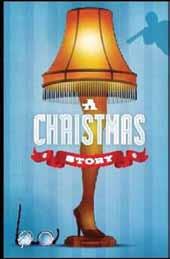
Humorist Jean Shepherd’s memoir of growing up in the midwest in the 1940’s follows 9-year-old Ralphie Parker in his quest to get a genuine Red Ryder BB gun under the tree for Christmas. Ralphie pleads his case before his mother, his teacher and even Santa Claus himself! A Christmas Story is the perfect, familyfriendly way to celebrate the season!

Victorian christmas open House and candlelight tours december 9th – 11th Jack House, San luis obispo slocity.org



Come enjoy the splendor of a Victorian Christmas with docent-led tours of the historic Jack House. Following tours, hot cider and cookies are served in the Victorian kitchen, and visitors may enjoy unique items in the Wash House Gift Shop.

the nutcracker december 10th – 11th christopher cohan center civicballetofslo.org

It’s Christmas Eve, and Clara is about to have the night of her dreams! Audiences of all ages will marvel at the magic and wonder of this spectacular, professional production that has delighted the Central Coast for more than 30 years.
Polar Bear dip
January 1st @ 9:30am cayucos Pier cayucoschamber.com
Hundreds of people show up each January 1st to kick off the New Year by jumping into the cold waters of the Pacific Ocean off Cayucos as part of the Carlin Soulé Memorial Polar Bear Dip. No wetsuits are allowed, and most participants wear swimming suits or come in costume - including pirates and ladies in fancy hats, or with accessories, including sombreros, wedding dresses or anything fun they can think up. The festivities begin at 9:30 am, with the Polar Bear Dip at noon.

Art After Dark

January 6th @ 6:00pm – 9:00pm downtown San luis obispo sloartscouncil.org



Over 20 galleries and non-traditional art venues (think restaurants, boutiques, and salons) spotlight the best of established and emerging local artists. They sometimes also feature the works of nationally and internationally acclaimed artists.




